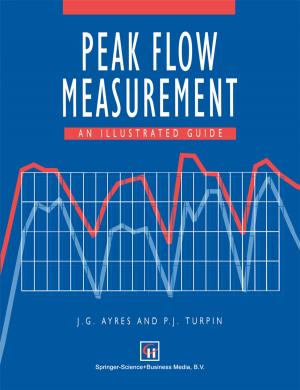Evoked Brain Potentials in Psychiatry
Nonfiction, Health & Well Being, Medical, Specialties, Psychiatry| Author: | Charles Shagass | ISBN: | 9781461586548 |
| Publisher: | Springer US | Publication: | December 6, 2012 |
| Imprint: | Springer | Language: | English |
| Author: | Charles Shagass |
| ISBN: | 9781461586548 |
| Publisher: | Springer US |
| Publication: | December 6, 2012 |
| Imprint: | Springer |
| Language: | English |
Two purposes have guided the writing of this book. Originally, I wanted only to bring together the results which we have obtained during more than ten years of work on evoked potentials in psychiatric disorders. However, it soon became clear that I really wanted to do a little more than that. First of all, a systematic review of the literature seemed indicated. Even though research findings are usually presented in the context of such a review, our laboratory has not studied every aspect of evoked potentials. Consequently, it seemed more appropriate to place our own results within the framework of a general presentation of the evoked-potential field, rather than to have our specific studies govern topic selection. Second, I found that I wanted to expound on the principles and details of techniques to a broader extent than warranted for presenting only our own results. The motivation for attempting such a "methodological primer" came not only from my long-term preoccupation with technical issues, but from contacts with many investigators who consulted me during the early stages of their ventures into evoked-potential research. Thus, to the initial goal of a re search monograph was added that of a systematic account of both the substantive findings and the methodology of the field.
Two purposes have guided the writing of this book. Originally, I wanted only to bring together the results which we have obtained during more than ten years of work on evoked potentials in psychiatric disorders. However, it soon became clear that I really wanted to do a little more than that. First of all, a systematic review of the literature seemed indicated. Even though research findings are usually presented in the context of such a review, our laboratory has not studied every aspect of evoked potentials. Consequently, it seemed more appropriate to place our own results within the framework of a general presentation of the evoked-potential field, rather than to have our specific studies govern topic selection. Second, I found that I wanted to expound on the principles and details of techniques to a broader extent than warranted for presenting only our own results. The motivation for attempting such a "methodological primer" came not only from my long-term preoccupation with technical issues, but from contacts with many investigators who consulted me during the early stages of their ventures into evoked-potential research. Thus, to the initial goal of a re search monograph was added that of a systematic account of both the substantive findings and the methodology of the field.















